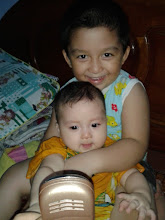Altogether, the new feature technology offers a convenient, time saving and simplified engineering within the FRIENDSHIP-Framework 2.0.
For a realistic impression of the designs the FRIENDSHIP-Framework 2.0 now employs a skybox technique, i.e., a background creation with sky, water and scalable wave patterns. This technique supplies the designer with impressive pictures and animations to show and demonstrate the design to the client. Furthermore, clipping planes or clipping cubes, i.e., a 3D visualization of all objects in a defined cube or space, are introduced to facilitate a finer graphical and formal assessment of the designed geometry. What is more, dimensioning, i.e., measuring and displaying distances between two points within a model is straightforward: simply define the desired space by selecting points and the FRIENDSHIP-Framework will render and display the corresponding information.
Next to the finer and easier access to the geometry's qualities a range of additional assets comforts the designer in handling the engineering software. Varying and manipulating designs is now easy through a) the application of different surface materials, b) labeling objects, i.e., tagging a description or note to the model or parts of it, and c) picture frames. Picture frames support the use and integration of pictures into a scene. Here, pictures can serve not only as illustration but also as background information for re-engineering. This helps the designer to develop a model from an example or older baseline say from a scanned lines plan.
The FRIENDSHIP-Framework 2.0 further facilitates tight coupling of external programs, codes or tools via the integration modes XML, generic interface and COM interface. Through these, a variety of operations can be conducted, be it an integral part of the design process, i.e., optimization, or be it for documentation and archival purposes. Depending on the external application, coupling through either XML or template files is facilitated on side of the FRIENDSHIP-Framework. In order to link office programs like MS Word or Excel for processing and archiving data, coupling via the COM interface is easily set up.
Interface via XML files
The FRIENDSHIP-Framework 2.0 offers the possibility for data exchange in XML (EXtensible Markup Language) format as it employs XML for handling and interchanging data. XML provides tight coupling of applications and fine control of data transfer. All applications can be tied via XML, if they read, write and "understand" XML in order to process the incoming and outgoing data. If this option is not available coupling via generic interface is advisable.
The FRIENDSHIP-Framework 2.0 offers the possibility for data exchange in XML (EXtensible Markup Language) format as it employs XML for handling and interchanging data. XML provides tight coupling of applications and fine control of data transfer. All applications can be tied via XML, if they read, write and "understand" XML in order to process the incoming and outgoing data. If this option is not available coupling via generic interface is advisable.
The Generic interface
By definition generally deployable, the generic interface is applicable to all applications. Generic coupling exchanges data by use of templates and file parsing. The FRIENDSHIP-Framework 2.0 comes with an editor which guides and supports the user in setting up the interface in order to read, evaluate and process external data.
By definition generally deployable, the generic interface is applicable to all applications. Generic coupling exchanges data by use of templates and file parsing. The FRIENDSHIP-Framework 2.0 comes with an editor which guides and supports the user in setting up the interface in order to read, evaluate and process external data.
COM interface
The COM (Component Object Model) interface works with the creation of objects in the coupled application. It is provided by the respective software provider, e.g. Windows, and can be readily addressed from the FRIENDSHIP-Framework 2.0. The FRIENDSHIP-Framework steers and controls coupled applications, e.g. MS Excel.
The COM (Component Object Model) interface works with the creation of objects in the coupled application. It is provided by the respective software provider, e.g. Windows, and can be readily addressed from the FRIENDSHIP-Framework 2.0. The FRIENDSHIP-Framework steers and controls coupled applications, e.g. MS Excel.
Beyond this, FRIENDSHIP-Framework 2.0 comes with a number of further improvements and extensions, for instance
- Additional feature functionality, i.e., scopes in feature definitions, re-designed feature definition editor, file i/o, launching of external processes and programs
- Components library
- Quality assessment for surfaces and curves, i.e., curvature visualization
- New GUI features, e.g. workspaces, space mouse support, context menu in three view modes: 3D, tree, object editor
- 2D graphics view with pdf export
- Automatic pdf diagram creation from design results
- Further improved comprehensive integrated documentation
- Improved project management, e.g. dependency tree, highlighting objects in tree
Please check the online documentation within the FRIENDSHIP-Framework 2.0 for detailed information on the new developments.
For first and fresh impressions of the new release please download your trial version.





No comments:
Post a Comment